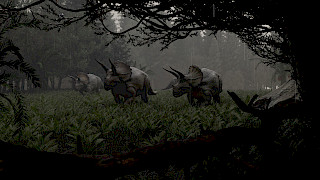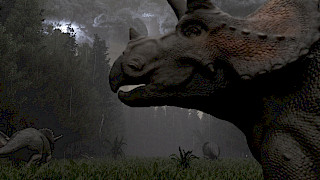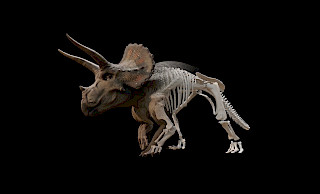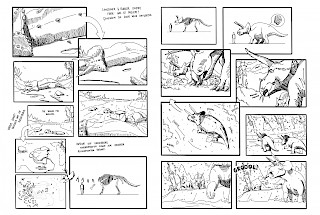Visualizations of prehistoric life have gained popularity again in recent years. Multi-part series broadcast by the big streaming providers have fascinated and excited viewers. In terms of the visual representations of dinosaurs, it has becomes increasingly difficult to distinguish between scientific facts and hypotheses. This can be alleviated by shining a light on the process of creating these representations and giving the target group relevant insights.
These 3D animations, designed in collaboration with Prof. Dr. Anne S. Schulp, show a dinosaur find from Wyoming (USA). The reconstruction process is based on the find and enables audiences to partake in the hypothesis formation about possible events from 65 million years ago. The story revolves around a small group of triceratops that came to a tragic end in a riverbed in what we now know as North America. There is no clear answer, but the audience is encouraged to speculate about what may have happened.
«All the relevant aspects of a short animation – from concept and storytelling to audio design and, of course, visual design – are of the highest standard in every detail, which greatly benefits the way knowledge is communicated in this work. For example, Joël has skilfully created transitions between the spatial illusionistic representation and decontextualised elements, visually translating the question of fact vs. hypothesis and nurturing the scientific discourse. He manages to make audiences marvel while also raising questions which can then be pursued within the exhibition design at the museum. The dedication, discipline and precision, which are required for an overall achievement of this quality, are truly impressive.» – Excerpt supporting statement of the Subject Area Knowledge Visualization
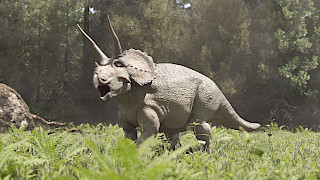
«My project is innovative because it engages audiences in the reconstruction process and hypothesis formation in the visualization of prehistoric animals.» – Joël Borter
«I would like to develop my skills in 3D and animation to produce high-quality and fascinating visualizations and make them accessible to a wide audience in a comprehensible way.» – Joël Borter
